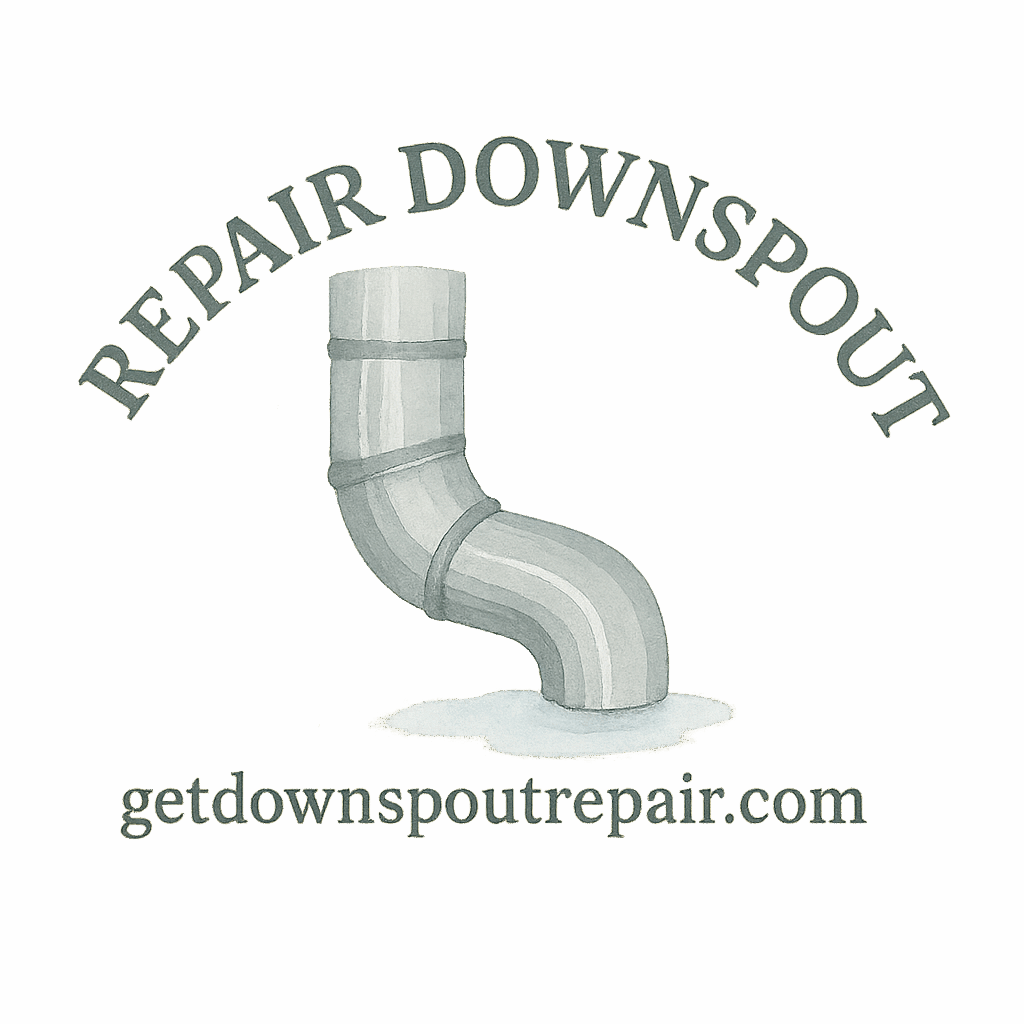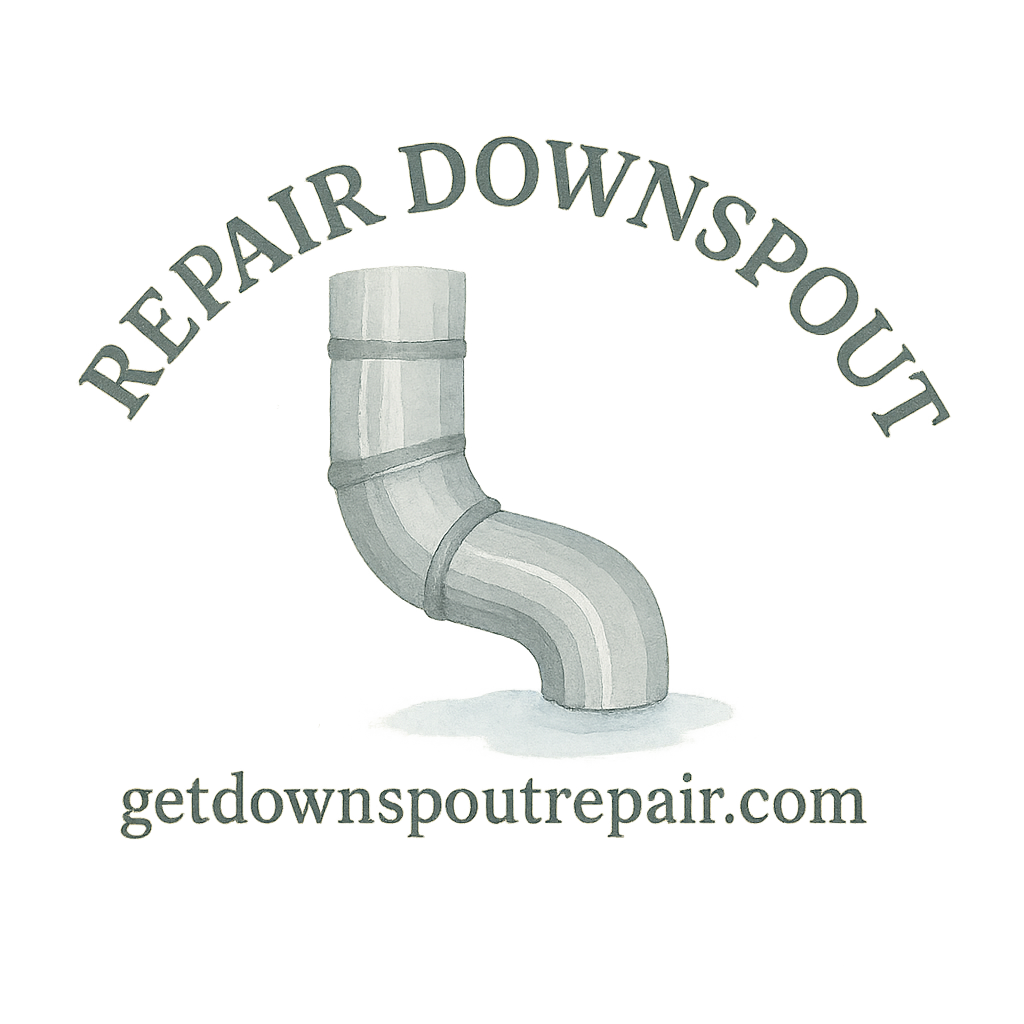Introduction: Why Downspout Repair Matters
When it comes to protecting your home from water damage, your downspouts are the unsung heroes. They quietly direct rainwater away from your foundation, keeping your basement dry and your landscaping intact. But here’s the catch—when they fail, your home pays the price. Cracked foundations, soggy lawns, and costly repairs can creep up faster than you think. That’s why understanding DIY downspout repair isn’t just handy—it’s a homeowner’s must.
What Are the Basics of Downspout Repair?
Before we dive into the most common questions, let’s set the stage. Knowing the repair basics (learn more here) gives you the confidence to tackle small problems on your own.
Understanding the Role of Downspouts
Downspouts are the pipes attached to your gutters that direct water away from your home’s foundation. Without them, water would pool dangerously close to your house.
Common Signs of Downspout Problems
- Water pooling around your home
- Visible cracks or holes in the pipe
- Rust, corrosion, or peeling paint
- Sagging or detached sections
If you notice these, it’s time to consider repair before it turns into a bigger headache.
Question 1: Why Is My Downspout Leaking?
Leaks usually happen when seams separate, rust eats through metal, or plastic downspouts crack. The fix can be as simple as applying a waterproof sealant or as involved as replacing an entire section.
Pro tip: Don’t ignore leaks. Even a small drip can lead to foundation issues.
Question 2: How Do I Fix a Clogged Downspout?
Clogs are one of the most common downspout problems. Leaves, twigs, and even small critters can cause blockages.
Tools Needed for Unclogging
You’ll want:
- A garden hose with a spray nozzle
- A plumber’s snake or auger
- Work gloves
- A ladder
Step-by-Step DIY Clog Removal
- Remove visible debris at the top of the downspout.
- Flush water through with a hose.
- If water doesn’t flow, use a plumber’s snake to break up the clog.
- Rinse again until water flows freely.
For prevention, check out gutter cleaning tips.
Question 3: Can I Patch Holes in My Downspout?
Yes, you can! Small holes can be patched using metal flashing, epoxy putty, or even specialized downspout repair kits. For larger holes, replacing a section is more reliable.

Question 4: How Do I Reattach a Loose Downspout?
Loose downspouts usually need new brackets or straps. Secure them firmly against the wall, ensuring water still slopes downward.
Question 5: What Materials Are Best for Repairs?
Cost-Effective vs Premium Options
If you’re on a budget, vinyl downspouts and sealants are cheap and easy. If you’re after durability, go for aluminum or galvanized steel. Check out this breakdown of costs and materials for more guidance.
Question 6: Should I Replace or Repair My Downspout?
If damage is isolated, repair makes sense. But if your downspouts are old, rusted, or falling apart in multiple places, replacement is often the smarter long-term investment.
Question 7: How Do I Prevent Future Downspout Clogs?
The best prevention is routine cleaning. Installing gutter guards or strainers also keeps debris out. For more strategies, visit prevent clogging tips.
Question 8: What Tools Do I Need for DIY Repairs?
At minimum, have these in your toolkit:
- Screwdriver or drill
- Tin snips
- Sealant gun
- Work gloves
- Safety goggles
Want a complete gear guide? Check out DIY tools for downspout repair.
Question 9: How Much Does Downspout Repair Cost?
DIY fixes can cost as little as $20 for sealants and brackets, while professional services run higher. Your expenses depend on materials and severity of damage. For details, see the budget tips.
Question 10: Can I Handle Severe Water Damage Myself?
If water has already infiltrated your basement or foundation, DIY may not cut it. That’s when calling a pro is a must. Learn more at drainage protection.
Question 11: When Should I Call a Professional?
DIY is great for minor clogs, leaks, or reattachments. But if your downspout system is collapsing, or you’re unsure, it’s time to seek professional help.
Question 12: How Do I Maintain My Downspouts Year-Round?
- Clean gutters at least twice a year
- Inspect for cracks after heavy storms
- Reapply sealant annually if needed
- Clear away landscaping that blocks flow
Regular care saves you from emergency repairs later.
Extra Tips for Beginners Attempting DIY Repairs
Safety Tips to Keep in Mind
- Always use a sturdy ladder on level ground
- Wear gloves and goggles
- Never work alone if the repair requires climbing
Budget-Friendly Tricks
Reusing old brackets, shopping during off-seasons, or checking downspout save hacks can cut costs without cutting corners.
Conclusion
DIY downspout repair might feel intimidating at first, but once you know the basics, it becomes just another part of homeownership. By tackling leaks, clogs, and loose fittings early, you’re saving yourself from expensive foundation repairs later. Use the right tools, stay consistent with maintenance, and don’t be afraid to call a pro when needed. Your home—and your wallet—will thank you.
FAQs
1. How often should I clean my downspouts?
At least twice a year—usually in spring and fall.
2. Can I paint my downspouts after repair?
Yes! Just make sure you use exterior-grade paint that bonds to metal or vinyl.
3. Do gutter guards eliminate the need for cleaning?
Not entirely. They reduce debris but don’t prevent it completely.
4. How do I know if my downspout needs replacement instead of repair?
If multiple areas are rusted, sagging, or breaking apart, replacement is more cost-effective.
5. Are vinyl or metal downspouts better for DIY repair?
Vinyl is easier to work with, but metal lasts longer.
6. What’s the quickest fix for a leaking seam?
Apply waterproof sealant on the inside and outside of the seam.
7. Can I extend my downspout without professional help?
Absolutely! Extensions snap onto most systems and redirect water further from your foundation.


